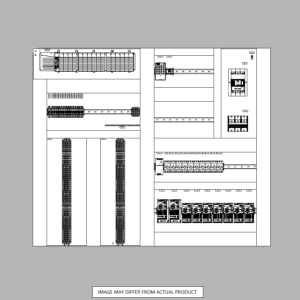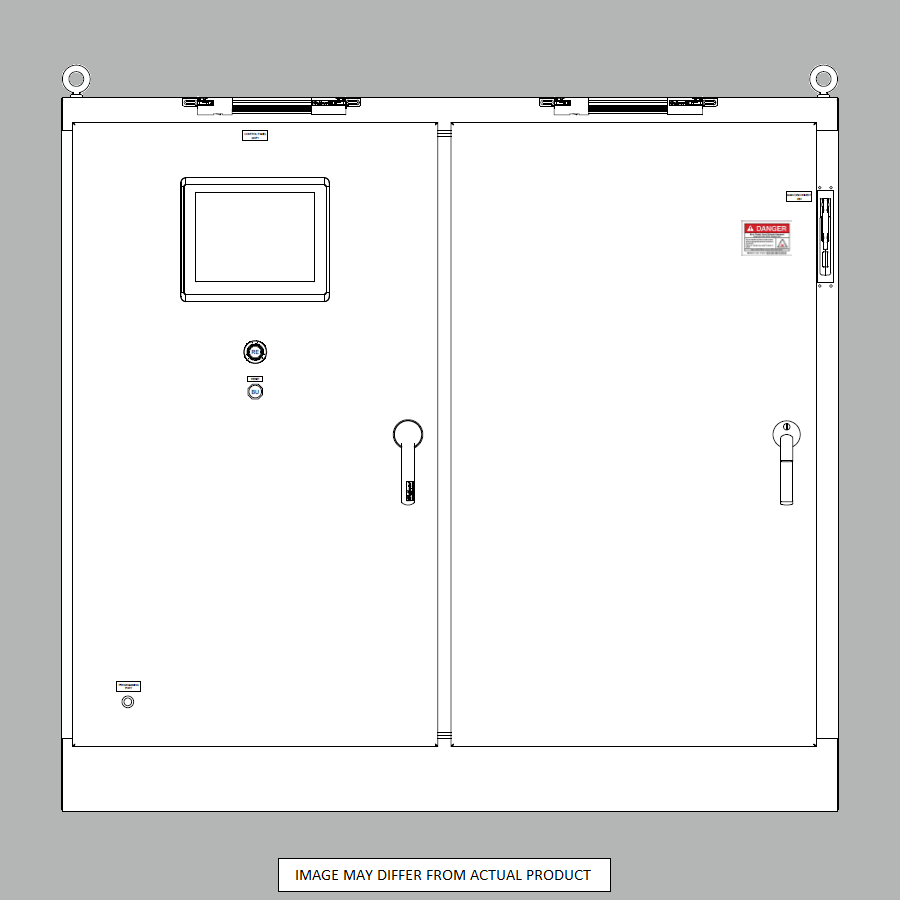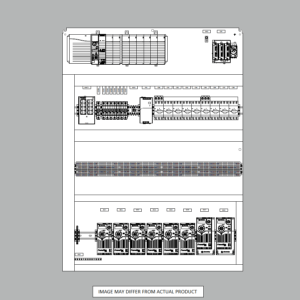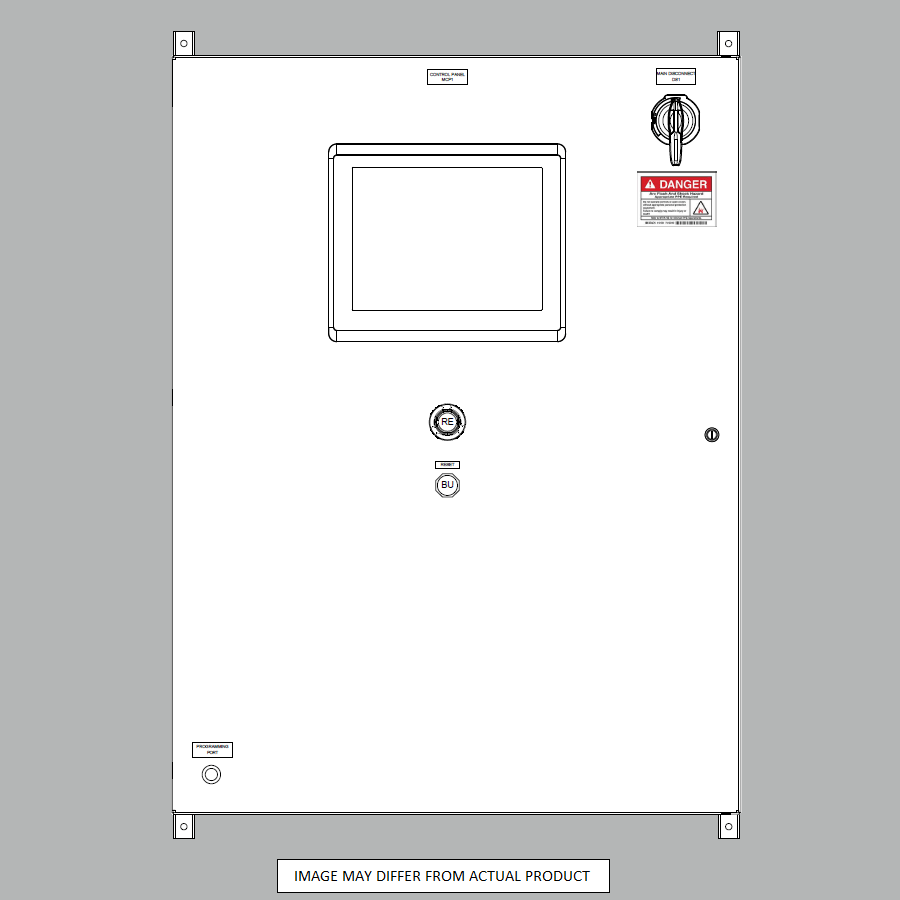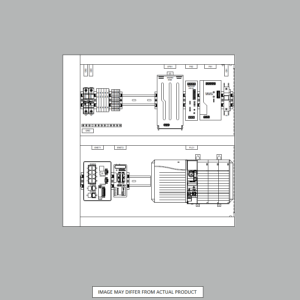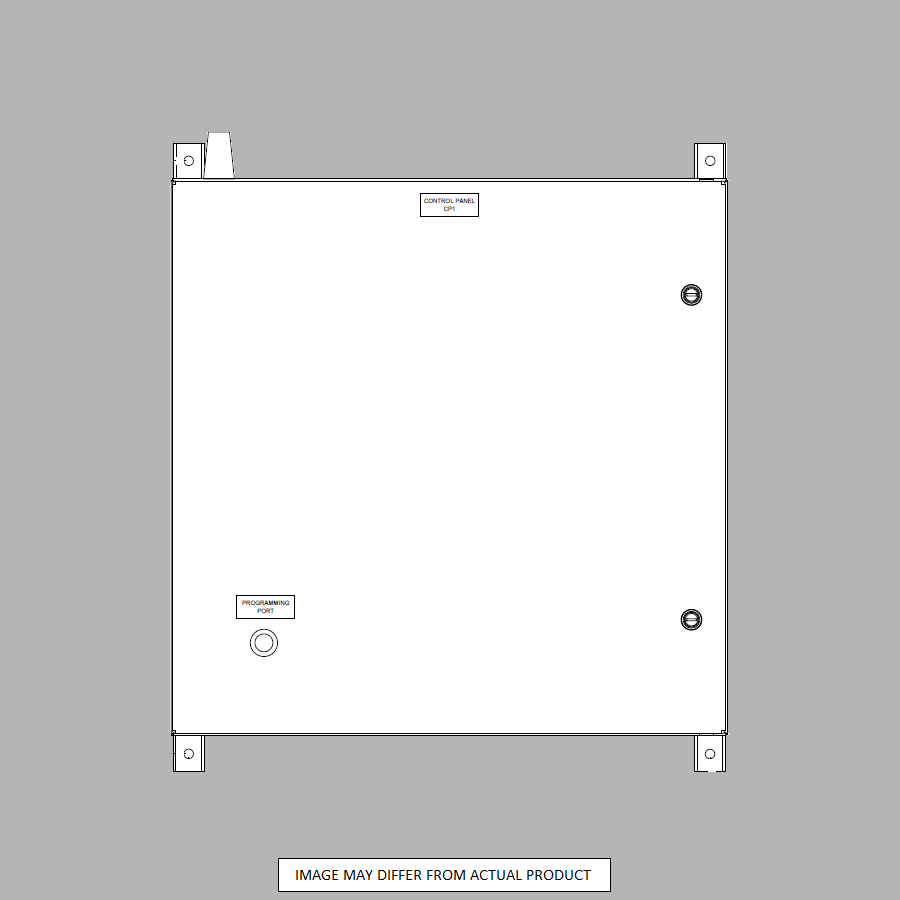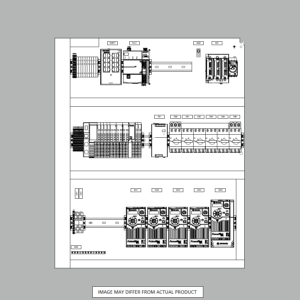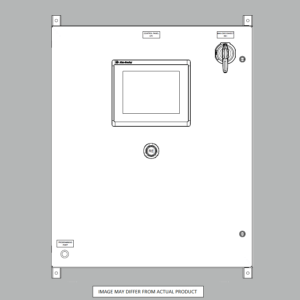Electrical Control Panel
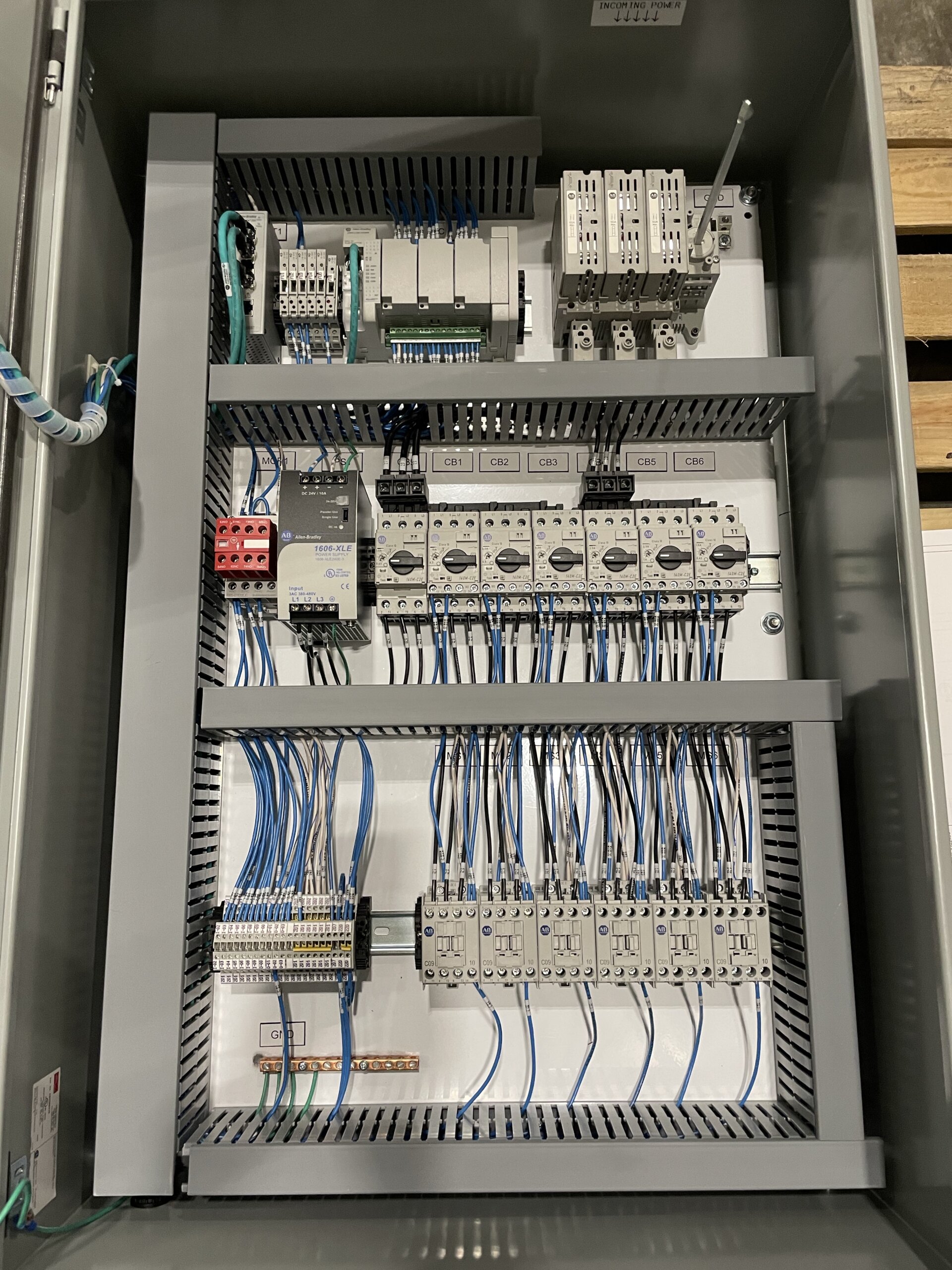
Electrical Control Panel
An electrical control panel is a metallic box that allows the person to control all electric equipment, appliances, and circuits mechanically by using electric energy. It gives an operator full access to the whole electric system of a specific location within one large electric board, and with that access, operators can monitor and maintain the entire electric power system. An electrical control panel provides the fastest and easiest method of troubleshooting and clearing issues, and multiple protection devices within an electrical control panel give safety to the whole power system of a specific power system.
Electrical Control Panel – Structural Components
The structure of the electrical control panel gets designed in a way to house maximum electric equipment within its boundaries, keeping all running systems safe. There are two fundamental structural components of this type of panel. They are:
The Enclosure
Enclosure in the control panel plays the role of its body, which is a metallic box made mostly either from aluminum or stainless steel. Its job is to house all equipment within it and provide electrical safety to the equipment from outdoor conditions, where its size depends on the required job. The enclosures have printed plate that shows the specification of the usage limits for the electric control panel, such as whether it could get used for indoor applications or outdoor applications, waterproof, dustproof, hazardous condition rating, and explosion-proof rating. These ratings get decided by the NEMA classification of the electrical control panel after safety and IP testing.
The Back Panel(s)
The back panel is a metallic sheet housed inside the enclosure that provides actual housing and connectivity to electric equipment in an electrical control panel. It either has mounting holes, or one can drill holes for fitting-in electric equipment. DIN rails are an essential part of the back panel that provides housing and fitting structure for electric equipment that gives structural support within the enclosure. Another crucial component in back panels is wire ducts that allow connectivity of equipment with electric power in a mannered way and makes the process of maintaining and troubleshooting easier by giving a clear view of conductor lines.
Wire Ducts and Din Rail
The wire ducts are usually made of plastic. They have either wide or thin fingers on the sides that allow wire to exit and be connected to an electrical component. A removable lid is snapped to the top to protect and hide the wire runs underneath to give the electrical panel a clean, finished look.
Din Rail is a metallic strip used to hold many electrical components. Components easily snap on and can slide on the rail to any position required. This is a time-saving item so that each component does not need to be individually mounted to the back panel.
Electrical Control Panel – Electrical Components
The above-defined components make the structure of the electric control panel that provides safe housing for all of the electrical components, which include:
1. Main Circuit Breaker
It is a connecting point between the incoming power line and the electric control panel. It is a mechanical structure that allows an operator to connect or disconnect the electrical control panel or power system from the power line. The use or application of the main circuit breaker depends on the type of circuit breaker being used, but commonly it plays an intermediate role to protect the electric panel system from power line fault currents by automatically disconnecting the system. The power line to the main circuit breaker can be of any distribution level voltage depending on the load application.
2. Branch Circuit Breaker
It is a connecting point between a feeder circuit breaker and a branch circuit. It is a mechanical structure that allows an operator to connect or disconnect the electrical devices from the feeding power line. The use or application of a branch circuit breaker depends on the type of circuit breaker being used, but commonly it plays an intermediate role to protect the electric devices from power line fault currents by automatically disconnecting the circuit. Some versions may also protect against thermal heat, in case a high that designed current is being drawn though the wires but not at the level of a short circuit.
3. Transformer or Power Supply
The electric control panel has step-down transformers that step down incoming power line voltage into the required voltage of the electric component. As the distribution line could be between 575v to 120v and the required electric voltage might be even lower than that, such as 24v, in such cases step down transformers or DC power supplies step down the voltage to the required level of the electrical control panel to run the system safely and at the levels the control devices are designed to use.
Sometimes there are multiple levels of voltages required for specific different electric equipment. In that case, multiple step-down transformers or DC power supplies get installed to supply accurate voltage to the specific electric equipment.
4. Programmable Logic Controller (PLC)
PLC is the brain behind the electrical control panel that works on logical input. These inputs are preset and given to the PLC, which operates the whole electric system of industries. It gets connected with several inputs from different terminal blocks and has multiple outputs depending upon power signals. There are different kinds of sensing devices installed on assembly lines of industries, such as proximity switches and sensors that provide necessary feedback to PLC, which allows it to change the logical output to make stay system efficient and within limits.
5. Human Machine Interface (HMI)
The electrical control panel has a complex internal structure, consisting of much electric equipment, which makes it difficult for the operator to understand the ongoing situation, make decisions accordingly, and methods of giving input to the system. HMI creates a space for the operator to understand the logical operations of PLC and electric control panel and makes it easier to accord direct inputs. The sole purpose of HMI is to assist the operator in controlling functions of the electrical control panel and allows him to maintain commands over the power system.
6. Network Switch
The 24v communication line connecting PLC with all other equipment that needs to follow preset logic and conditions given by operators gets controlled by Network Switch. The Network switch controls connectivity between PLC and means of communication to other electric equipment within the panel.
7. Relays
Relays are protective devices that connect and disconnect electric equipment from the power line. It gives the operator authority over power ON and OFF while making and breaking electric circuits. There are three types of relays within electric control panels. First are small relays that control the power line to small electrical equipment such as lights and fans. The second are large size relays called contactors that control the functionality of motors. The third type are called master control relays (MCR) and are used for the emergency stop circuit, breaking all power to output devices in the event the operator engages an emergency device.
8. Push Buttons or Pilot Lights
Push buttons are a foundational electrical component of an electrical control panel. They are most commonly installed in the door of the panel. There is usually an emergency stop red mushroom head push button and a MCR reset push button. Other buttons are used by the operator to control different operations of the machine or process.
Pilot lights look very similar to push buttons but are only used as a visual indicator to the operator to inform them of something happening with the control system.
Sometimes push bottoms and pilot lights are combined into one device and used for multiple purposes.
9. Terminal Block
Terminal blocks are a fundamental electrical component of a heavy-duty electrical control panel where multiple power sources or voltage levels get required. These terminal blocks house a specific voltage power supply from where power lines get taken to the specific equipment around the electrical control panel.
Benefits of Electrical Control Panel
- It makes it easier to understand and monitor the working of the electric system within specific premises, making it an assistive factor for operators to control working and achieve objectives in automation industries.
- They can get made according to your specific industry requirement as there are no design limits, which makes them flexible to fit in according to the need of your industry.
- The electrical control panel makes the electric system more reliable by giving real-time data of every change happening within the power system and authority to make changes to turn them into suitable conditions for equipment.
- The complex industrial system gets managed from a single electric control panel, which makes it very easier and more affordable to control the system’s functionality.
- These electric panels are available in both indoor and outdoor mode, which makes them weather resistant in outdoor mode and allows the operators in the field to give necessary or emergency inputs.
- These are hazard-proof and fireproof with complete protective gears to save the system in case of any emergency, which makes it safe to operate for operators.
- It decreases the overall running cost of any industry by simply providing management, control, and inspection from one panel that requires fewer technicians and skillful engineers to operate the whole industry.
- As experts control the whole process within industries by simply monitoring the electric control panel indicators, that decreases the chances of any upset happening within the process system.
- It becomes easier to track and troubleshoot issues within the whole system by simply checking the working of all equipment and lines at the electrical control panel.
Electrical Control Panel Maintenance
The electrical control panel is responsible for giving operators a running overview and control over any specific electric system application. It has a complex structure and electric equipment that perform strenuous tasks, and it requires timely maintenance to keep performance at a high level. The maintenance of the electrical control panel system requires the following jobs.
- The labeling of all components, wires, and terminals must be clear to make new operators understand the working conditions.
- All electric connections must be clear and separated from each other so that monitoring becomes easier.
- To clear out all dust within the enclosure and back panels.
- Necessary measures to save the control panel body from rusting or any pest attack.
Conclusion
Electrical Control Panel is a complex electric board that has various power supplies or various step-down transformers installed on a single-line power source that offers reliable control and overview to the operator over a specific industry or building. The electrical control panel is a well-built metallic structure that houses a circuit breaker to control power supply, transformers for voltage leveling according to requirement, terminal blocks for housing different voltage level lines, PLCs for logical operation and automation, relays for control over connection, network switches for communication connectivity and HMI for allowing the operators to have authority and control over all operations. Electric companies around the world make custom electric panels that completely suit specific industry requirements.
Still confused about what’s inside an Electrical Control Panel? Need to bounce your questions off an expert? Contact Us
SHOP NOW
-
Large Process Automation: Panelview 5000, ControlLogix 5580
$21,389.00 Select options -
Small Process Automation: Panelview 5000, ControlLogix 5580
$17,999.00 Select options -
Small Process Automation: ControlLogix 5580, UPS Battery Backup, Cellular Modem
$16,999.00 Select options -
Advanced Automation: Panelview 5000, Safety CompactLogix 5380
$8,499.00 Select options

